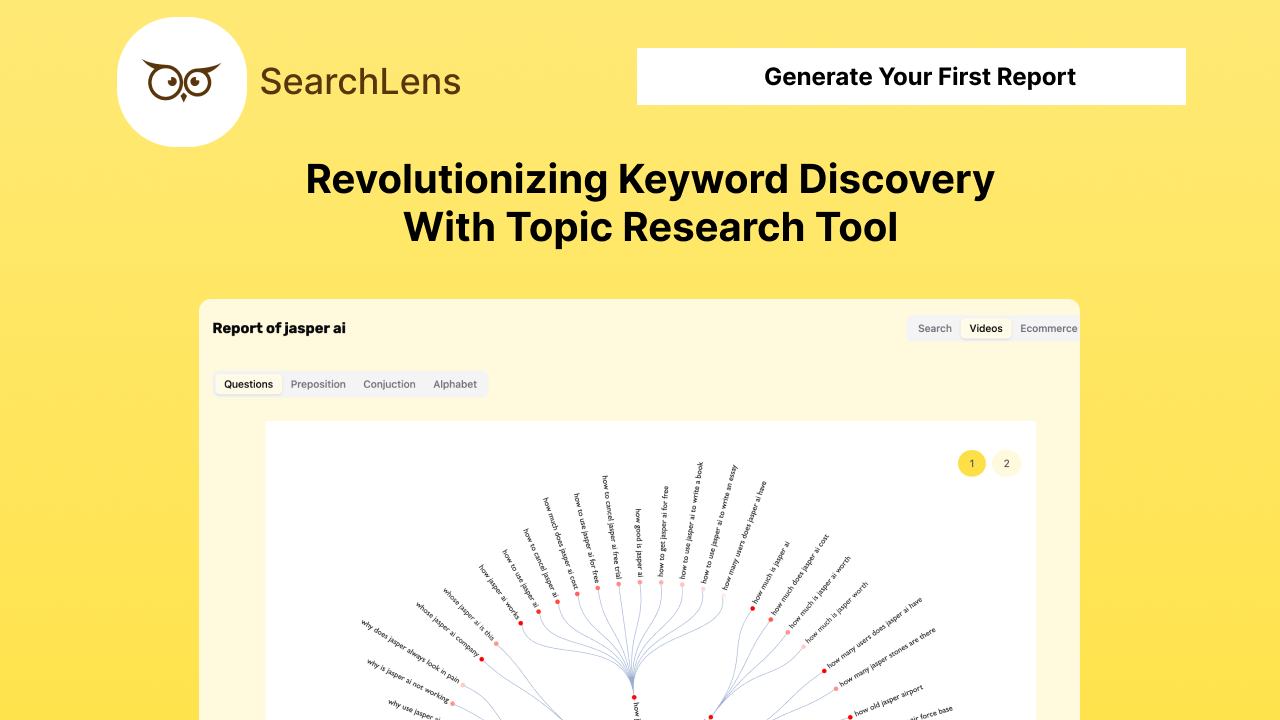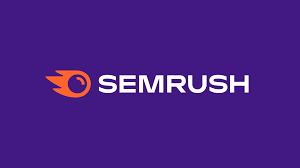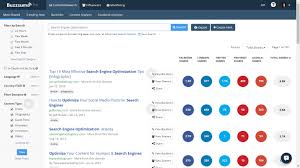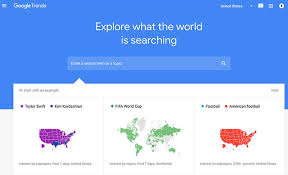
Search Insights Tools for Market Research
Uncover the Best Tools to Enhance Your Market Research Strategy
By Shishir
Published on
7 minutes
Table of Contents
Market research is essential for understanding customer needs, identifying trends, and staying competitive in your industry. It involves gathering data about target audiences, market dynamics, and competitor strategies to make informed decisions.
Effective market research can uncover new opportunities, predict future trends, and help businesses tailor their offerings to meet customer expectations. In today's data-driven landscape, leveraging search insights is a crucial component of market research, providing actionable information about consumer behavior and preferences.
Search insights tools offer valuable data that can guide your marketing strategies, product development, and content creation efforts. This guide highlights some of the best tools for extracting actionable search insights for effective market research.

SearchLens
Market research is essential for understanding your audience, competitors, and emerging trends. Searchlens acts as a powerful tool that simplifies and enhances this process, providing actionable insights that drive smarter business decisions. Here's how Searchlens supports market research:
Discover Audience Interests
Searchlens helps uncover what your target audience is searching for by identifying popular keywords, trending topics, and frequently asked questions. This enables you to:
- Understand consumer pain points.
- Identify what’s driving demand in your market.
- Craft content or products that address specific needs.
Analyze Competitor Strategies - By analyzing competitor data, you can discover which keywords they rank for, evaluate their search traffic patterns and content strategies, and identify gaps in their approach that present opportunities for your business to gain market share.
Ecommerce Keyword Insights - SearchLens helps identify high-performing product keywords, uncovers niche terms that can help differentiate your offerings, and reveals the customer intent behind various search queries.
Spot Market Trends - By analyzing search volumes and trends over time, Searchlens gives you real-time insight into shifting consumer behaviors. SearchLens helps businesses stay ahead of seasonal trends, predict emerging market opportunities, and adapt strategies to changing demand through its comprehensive search volume and trend analysis capabilities.
Data-Driven Decision Making - Searchlens empowers you with easy-to-export data (CSV/PNG) that can be shared with teams or integrated into your reports. Whether you’re pitching to stakeholders or optimizing your campaigns, the insights from Searchlens provide the foundation for confident, data-backed decisions.
Google Keyword Planner
Why Use It: Google Keyword Planner is a free tool designed to help you discover keyword ideas and assess their search volume and competition levels. For market research, it provides insights into what people are searching for, revealing trends and potential opportunities in your niche.

Key Features:
- Displays monthly search volumes for keywords.
- Highlights competition levels and cost-per-click (CPC) data.
- Suggests related keywords to expand your research.
Use Case: Suppose you’re launching a new fitness product. Use Google Keyword Planner to identify high-volume keywords like “best home workout equipment” or “dumbbells for beginners.” This data can help you tailor your product descriptions and content strategy.
SEMrush
Why Use It: SEMrush is an all-in-one tool for SEO, PPC, and content marketing. Its extensive features make it a powerhouse for market research, offering data on keyword trends, competitor analysis, and backlink opportunities.

Key Features:
- Provides keyword difficulty scores and search volume trends.
- Allows you to analyze your competitors’ organic and paid strategies.
- Offers traffic analytics to gauge audience behavior.
Use Case: If you’re competing in the skincare market, SEMrush can show you which keywords competitors rank for (e.g., “organic face cream”). This insight can help you identify gaps in your content or product offerings.
AnswerThePublic
Why Use It: AnswerThePublic visualizes search data, helping you uncover questions, comparisons, and phrases related to your industry. It’s particularly useful for understanding customer pain points and preferences.
Key Features:
- Organizes queries into categories like “why,” “what,” and “how.”
- Provides real-time suggestions for content ideas.
- Highlights long-tail keywords that align with user intent.
Use Case: A business selling coffee machines might find queries like “what’s the best coffee machine for beginners?” or “how to clean a coffee machine,” helping them create targeted blog posts or instructional videos.
BuzzSumo
Why Use It: BuzzSumo focuses on content research, showing you the most shared content across social media platforms. For market research, it’s a great tool for identifying trending topics and understanding audience interests.

Key Features:
- Identifies high-performing content in your niche.
- Tracks influencer engagement to find potential collaboration opportunities.
- Highlights trending topics and keywords.
Use Case: If you’re in the travel industry, BuzzSumo can reveal trending topics like “best eco-friendly travel destinations,” allowing you to align your offerings with consumer interests.
Google Trends
Why Use It: Google Trends provides a macro view of search data, helping you spot seasonal patterns, emerging trends, and changes in consumer behavior. It’s invaluable for businesses looking to adapt to shifting market conditions.

Key Features:
- Displays search interest over time.
- Allows geographic targeting to understand regional demand.
- Highlights breakout search terms gaining rapid traction.
Use Case: A retailer planning a summer campaign can use Google Trends to identify when searches for “beach accessories” or “swimwear” peak, ensuring timely product launches and promotions.
SpyFu
Why Use It: SpyFu specializes in competitive analysis, giving you a behind-the-scenes look at your competitors’ SEO and PPC campaigns. It’s a valuable resource for benchmarking your performance and uncovering new opportunities.
Key Features:
- Shows the keywords competitors rank for and their ad spend.
- Provides historical data for organic and paid strategies.
- Highlights opportunities for backlink acquisition.
Use Case: If your competitor is targeting “eco-friendly packaging solutions,” SpyFu can help you assess the success of their campaigns and adapt your strategy to capture market share.
Hotjar
Why Use It: While primarily a user behavior tool, Hotjar’s heatmaps and session recordings provide insights into how visitors interact with your website. For market research, this data can reveal customer preferences and pain points.

Key Features:
- Heatmaps show where users click, scroll, and spend time.
- Session recordings offer a detailed view of user behavior.
- Feedback polls and surveys provide direct customer input.
Use Case: If users frequently abandon a product page, Hotjar can highlight usability issues or missing information, enabling you to make data-driven improvements.
Conclusion
Search insights tools are indispensable for market research, providing data that drives informed decisions and competitive strategies. Whether you’re analyzing keywords, tracking trends, or studying competitors, these tools offer a wealth of information to help you stay ahead. By integrating tools like Google Keyword Planner, SEMrush, and Hotjar into your workflow, you can better understand your audience and position your business for success.